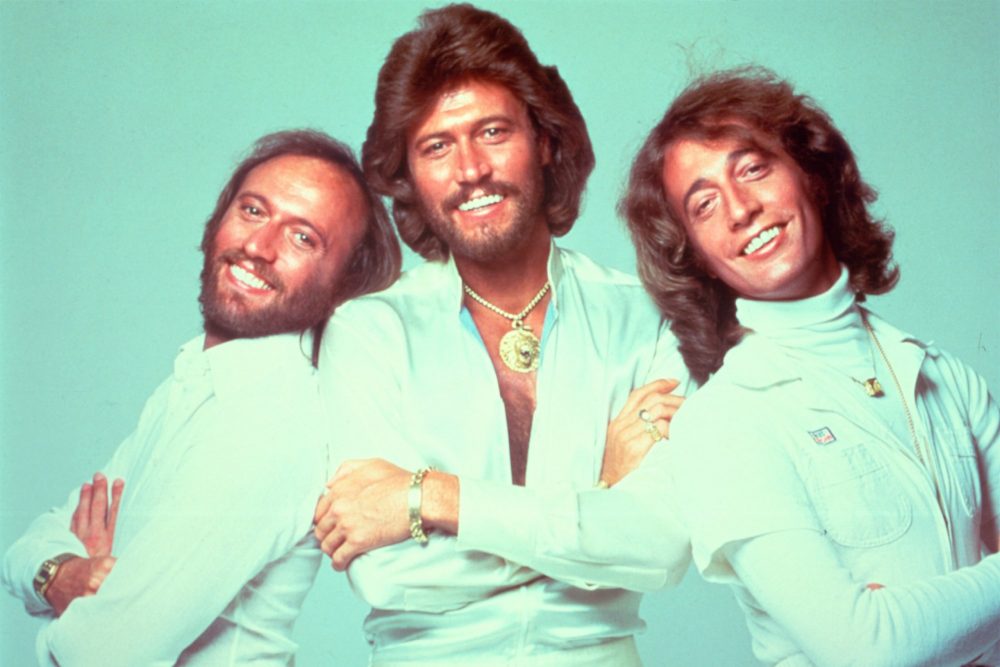

The late Maurice Gibb (she refers to him as “Morris,” the English pronunciation). I wrote about it on my website about three years ago and a guy from Chicago writes me and says, ‘Oh, here’s a picture of John Lennon the next night wearing your brother’s name tag.’” When asked about the Moses name tag, Lennon reportedly cracked, “I’ve been demoted.”īut there was one star she met on an assignment who became a real-life love story. “ John Lennon asked for his name tag and Paul McCartney took Jimmy Christ’s name tag. Their name badges showed only their last names. Her brother Jack, and his friend Jimmy Christ, were hired as rent-a-cops for the show. But the 1966 concert does have a Beatles anecdote connected to Moses.

She did see them in concert at the Hollywood Bowl in 1965, but missed their performance at Dodger Stadium in August 1966. And all of a sudden, he was just as groovy as the rock stars.” It was like, ‘Oh, this is a new day.’ He was so hip. It’s the best Elvis you’ve ever seen at that point. Moses got picked to sit on the stage close to him.

“So when he was going to be coming back on the scene, the publicist at RCA … called me and said, ‘You need to be at this show, just trust me.’” Tickets were sent over for the Comeback Special to be taped at NBC’s Burbank studios. “I had been an Elvis fan since fifth grade when he appeared on ‘The Ed Sullivan Show’ up until he went into the Army, and then I really couldn’t care less,” she says, mirroring Tiger Beat’s readers’ own fickle and fleeting taste. One such differentiation: Tiger Beat paid special attention to the Monkees, and Moses has praise for all of them except Nesmith, with whom she describes her encounters as difficult.Īnother highlight: meeting Elvis Presley. So, we just continued to do what was working.” Moses says the publication had fierce competition from Gloria Stavers’ 16 Magazine headquartered in New York, but that Tiger Beat’s aim was to be more authentic since it was located right in the middle of Hollywood. Once we saw the response to how much the readers loved the baby pictures, or to read about Mike Nesmith through the words of his college music teacher, stories that gave you a personal insight readership to go up. But those kind of core stories were really our bread and butter. And later, we would proceed to do stories on other topics. “First, we do, ‘Hey, meet the Osmonds.’ Then it became the Osmonds’ life story with baby pictures. How did Tiger Beat keep readers interested? “It became the right formula,” Moses explains. When the end of the summer came, the idea of college and serious journalism went right out the door.”įrom that point on, Moses became the point person for Tiger Beat’s coverage, writing about the biggest stars of the day, even as they rotated in and out of fashion. I was flying to San Francisco with the Jefferson Airplane and photographing the Stones. Says Moses: “I started work in January of 1966 for Tiger Beat, and, they were sending me to Hawaii and on tour with Paul Revere and the Raiders. Through Derek Taylor, press representative for Beach Boys, she was introduced to Tiger Beat, where he wrote a column. She also hooked up with another small mimeographed paper and continued to write, interviewing, among others, James Brown and the Beach Boys. Her DC5 story did appear in the Fullerton school paper. “I’d never done that before,” she tells Variety, recounting how her nerves almost got the better of her. “They were all tall and they had those British accents that, at the time, all of the girls my age were really over the top in love with anyone who spoke with a British accent. There was no such assignment, but it worked. She attended a show headlined by the Dave Clark Five and audaciously told the band’s tour manager that she’d been assigned to write an article about the group. At the time, Moses also moonlighted at the Melodyland Theater, across the street from Disneyland, which held concerts, and wrote for her college paper in Fullerton.


 0 kommentar(er)
0 kommentar(er)
